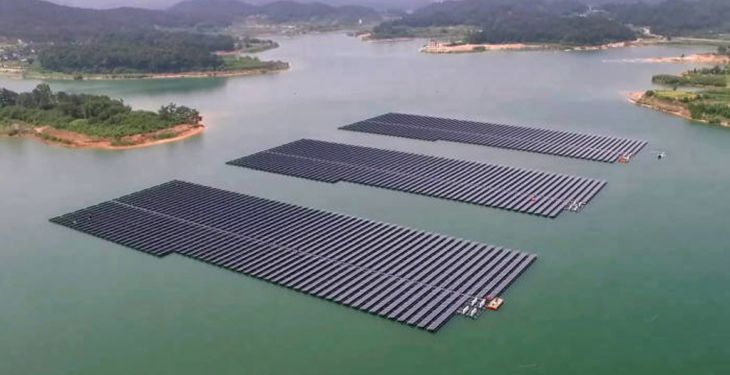China’s ambitions to dominate new energy technologies are unfolding at the site of an abandoned coal mine about 300 miles (483 kilometers) northwest of Shanghai.
There, in Anhui province, Sungrow Power Supply Co. has built the world’s largest floating solar farm with 166,000 panels on a lake created when a nearby mine collapsed. While not an entirely unique idea similar facilities are working in Japan, the U.K. and Israel — the project’s scale represents a step forward for China in shaping the future of energy.
President Xi Jinping’s government this week is drawing attention to those efforts at a meeting of energy ministers from around the world that concluded Thursday in Beijing. With plans to spend $360 billion on renewable energy by 2020, China is seeking to appear as a global leader on the environment, marking a contrast with U.S. President Donald Trump’s rebuke of the Paris Agreement on climate change, according to Bloomberg.
“The Chinese are really investing in the research and development side of innovation,” said Helen Clarkson, chief executive officer of The Climate Group, a non-governmental organization that works to promote clean energy technologies and policy.
While Trump has said repeatedly he wants to stimulate fossil fuels and especially coal, China is funding a series of ground-breaking projects that generate power without pollution. Whether with massive floating solar farms like the one in Anhui, sprawling wind farms or ambitious plans to develop geothermal reserves, the world’s most-populous nation is asserting itself as a powerhouse of clean-energy technology.
In the northwestern province of Qinghai, Huanghe Hydropower Development Co. is planning a demonstration project to integrate power from hydro-electric dams with wind turbines and solar cells. Similarly, the Guoshen Group, a power plant operator, intends to build a project that will combine wind, solar and thermal power with energy storage in the northern region of Inner Mongolia.
Meanwhile, construction has begun on China’s first large-scale effort to trap and store carbon dioxide emissions. The Yanchang Integrated Carbon Capture and Storage Project, Asia’s first commercial carbon capture plant, is set to begin operating in 2018.
“Everybody has to become more sophisticated about their investment strategy,” said Sophie Lu, head of China research at Bloomberg New Energy Finance. “Now it’s all about innovation either in new technology or in a new application or a new business model.”
